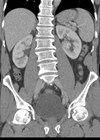The quest for a minimally-invasive approach to major abdominal surgery finds its roots at the start of the previous century, when Georg Kelling first described the technique of ‘ceolioscopy’ to inspect intraabdominal organs in 1901 [1]. Since those early days, many surgical giants such as Hans Frangenheim, Karl Storz and Sir Alfred Chuschieri have led the global development of laparoscopic and minimally invasive surgery, giving birth to the equipment, techniques and expertise surgeons are equipped with in modern-day theatres [1,2].
Between 1960 and the early 2000s there was a period of great technological advances with the development of virtual reality and the advent of the world wide web. Advancements in optics, remote technologies and computer-assisted hardware resulted in a race between technological companies who had identified potential room for improvement in laparoscopic surgery – namely the need for improved ergonomics, articulated instruments and a surgeon-controlled endoscope. This was the birth of robotic-assisted surgery (RAS) with Intuitive’s DaVinci system being trialled on humans in 1998. In May 2000 Binder and Kramer reported the first use of a robotic system in urology, performing the first robotic-assisted laparoscopic prostatectomy [3,4]. Since then, there has been an exponential growth in RAS in urology and renal surgeons have not been excluded from this development with the increasing use of robotics in nephrectomy, partial nephrectomy and procedures of the upper urinary tract [5].
The aim of this review is to discuss the use of RAS in the treatment of renal cell carcinoma (RCC). We will discuss the advantages and disadvantages of this surgical modality compared to open and laparoscopic surgery focusing on the technical differences, financial costs and the assessment of the surgical and oncological outcomes between these modalities.
Robotics in the treatment of RCC
A minimally invasive approach to upper tract oncological conditions such as RCC is now the gold standard approach, unless there is the risk of compromise to oncological, functional or perioperative outcomes, in which case an open surgical approach is preferred [6]. There is no doubt that the advent of RAS has brought technical and perioperative improvements over laparoscopy and open surgery.
Technical advantages
Rediscovered ‘freedom of movement’
From a technical perspective, RAS has provided benefits which can be considered a blend of those seen in laparoscopy and open renal surgery. The RAS approach has reintroduced the ability to perform ‘wrist-like’, precise movements with improved dexterity which is brought about by the robotic arms’ seven degrees of freedom. This allows the surgeon to emulate the movements of the human wrist in open surgery, allowing for an approach which is similar to that of laparoscopy while eliminating the rigidity of the traditional laparoscopic instruments. This rediscovered ability enables robotic surgeons to undertake complex tasks such as lymph node or hilar dissection with the precision offered by the human hand and wrist during open surgery while also enjoying the benefits of laparoscopy – namely improved visuals, pneumoperitoneum, the ability to work in small spaces under direct vision and smaller abdominal incisions. Furthermore, the ability to perform complex procedures has enabled surgeons to take on more complex patients such as higher complexity partial nephrectomies in patients with high body mass index, which previously would have been performed open rather than laparoscopic. A small number of high-volume centres have also pushed the boundaries by undertaking inferior vena cava (IVC) thrombectomies robotically, although this is far from standard practice.
Improved visuals and extra arms
Improvements in optics provide high definition, 3D, magnified views during surgery, helping the surgeon to perform more precise surgery while avoiding intraoperative complications. Additionally, the use of Firefly technology on DaVinci systems, allowing near infrared fluorescence imaging, combined with intravenous indocyanine green can allow surgeons to define the vascular tree in renal surgery. This can facilitate selective arterial clamping during robotic assisted partial nephrectomy (RAPN), ensuring appropriate regional arterial occlusion, with reduced blood loss and reduction in renal ischaemia injury.
The multiple surgeon-controlled arms enable the surgeon to control the endoscope during the surgery and use extra arms to provide traction or counter-traction to the area of dissection with excellent stability, thus giving the surgeon greater control during robotic surgery.
Ergonomics
Other benefits of the robotic approach include the improved surgeon ergonomics and comfort during long procedures, the ability to take scheduled breaks throughout the case and the fact that the operating surgeon is seated for the duration of the case. Surgeons using the robotic console do not require a sterile field and can hence pause to stretch the lower back, upper arm and shoulder muscles which typically cause pain and stiffness during long open and laparoscopic procedures [7]. Of course, some challenges remain but with a greater understanding of these new ergonomic challenges, companies and healthcare associations are working to educate and improve surgeon posture in the new robotic era [8].
Technical disadvantages
Access, availability and cost
The main technical disadvantages of RAS often relate to availability and access to training. It is no secret that the availability of robotic systems is often limited by high purchase cost and lack of theatre space for large, complex systems. This is improving and governments in the UK are continuing to invest in robotic systems for use in the NHS [9]. There is an established training pathway for implementation of robotic surgery with best practice detailed in the guide by the Royal College of Surgeons of Edinburgh. Nonetheless, even when hospitals have a robotic system and simulator, service pressures can limit access to this for trainees to undergo simulation training. Furthermore, while an understanding of robotic technology is mandated in the urology training programme along with technical skills in prostate, bladder and renal surgery, the development of robotic surgical skills is not part of the curriculum unless undertaking specialist modules. Robotic training is often reserved for post-CCT fellows although in NHS Scotland there are plans for the introduction of a robotic training curriculum across several surgical specialties, including urology [10].
Learning curve and differences in haptic feedback
From a surgical perspective, the introduction of new technology and operative systems requires a period of acclimatisation and the surgeon must overcome the learning-curve through simulation and wet-lab experience prior to using this technology on live patients. This is also true for the bedside assistant (who is still required to be scrubbed at the bedside) and the theatre staff who need to deal with new equipment.
One of the main challenges of adapting to this new system compared to laparoscopic and open approaches is the loss of haptic feedback and the need to learn to judge the degree of tension placed on sutures and tissues visually. This has long been an area of interest to engineers who seek to develop robotic arms which can provide haptic feedback in these systems. The outcomes are still pending [11].

Patient-related outcomes
Radical nephrectomy (RN)
Even though RAS has now been available for over a decade, there have thus far been no large-scale randomised controlled trials (RCTs) comparing these systems to laparoscopy. However, retrospective studies such as that performed by Jeong et al. in 2017 and the systematic review and meta-analysis by Li et al. in 2020 have demonstrated no significant difference in the incidence of major complications and perioperative outcomes such as blood loss, operative time and conversion rates [13,14].

Similarly, there are no RCTs comparing open and robotic approaches, but based on the results of retrospective studies and systematic reviews, one may infer that patients undergoing robotic-assisted radical nephrectomy (RARN) would be expected to have a lower estimated blood loss, lower postoperative pain and a shorter hospital stay than those patients undergoing open radical nephrectomy (ORN) since robotic and laparoscopic approaches have shown similar outcomes [13-17]. The above is reflected in Table 2 using data from the British Association of Urological Surgeons (BAUS) 2019 annual analysis of nephrectomies [18].
Partial nephrectomy (PN)
The EAU guideline on renal cell cancer recommends nephron-sparing surgery in the form of PN for all T1 tumours and for T2 tumours when feasible in order to preserve renal function and lower future cardiovascular risk [6,19]. Even though this procedure is typically reserved for small renal tumours, it is considered one of the most technically challenging procedures due to the time-pressures related to warm ischaemia secondary to clamping of the renal artery and intraoperative bleeding when performing tumour excision.
When comparing robotic (RAPN) and laparoscopic (LPN) approaches to partial nephrectomy, two systematic reviews and meta-analysis are often quoted showing a statistically significant difference in favour of RAPN in patients with T1 and T2 tumours relating to the rates of open conversion or conversion to RN, shorter warm ischaemia times, a smaller decrease in overall renal function and a shorter hospital stay [20,21]. Furthermore, the technological advantages of RAPN described in the previous section have allowed surgeons to undertake nephron-sparing surgery in more complex renal lesions, such as hilar or endophytic tumours which were previously not deemed amenable to LPN [22].
When comparing RAPN to open (OPN), a multicentre retrospective study with eight years of follow-up has shown that RAPN resulted in a lower complication rate, less blood loss, and a shorter warm ischaemia time. Furthermore, the length of hospital stay and overall morbidity was also reportedly less with RAPN [23]. The latest RCT (OpeRa RCT) reached the same conclusions, however, had poor accrual and was prematurely closed. Further attempts at an RCT are already underway, with the feasibility study for ROBOCOP II showing good accrual rates [24].

The BAUS annual analysis of nephrectomies has shown similar outcomes (Table 3). Interestingly, this real-world dataset shows that RAPN is associated with longer warm ischaemia times compared to OPN and LPN. The reason for this is not documented in the BAUS database, but based on the study by Volpe et al.; one may attribute this to the undertaking of more complex PNs using the robotic approach. Furthermore, a large number of OPNs utilise cold ischaemia, preventing direct comparison [18,22].
Oncological outcomes in renal cancer surgery
Radical nephrectomy (RN)
As with patient-related outcomes, the oncological outcomes between minimally-invasive modalities in patients undergoing RN for RCC are non-inferior between RARN and LRN. This data is once again based off retrospective cohort studies and systematic reviews such as that performed by Asimakopoulos et al. in 2014 which also demonstrated no difference in cancer recurrence rates or cancer-specific mortality between these two minimally-invasive modalities [25].
Similarly, the current available evidence comparing minimally-invasive and ORN showed no difference in oncological outcomes, but an overall survival advantage was noted in the minimally-invasive group [26,27].
Partial nephrectomy (PN)
Two recent systematic reviews (2018 and 2023) showed that there are no significant differences in oncological outcomes between minimally invasive and OPN in T1 and T2 tumours [28,29].
Cost-related outcomes
There are no current UK-based cost-analysis studies into the use of RAS in renal cancer surgery. However, an Australian study published in 2021 provided a succinct breakdown of costs associated with one of the most commonly used RAS in the UK – the DaVinci Xi system. This study quoted the cost of acquiring the DaVinci Xi at approximately £2,000,000 (AUS $3,900,000) in 2021. The study then looked at the cost of implementation, maintenance and consumables per specialty, with robotic urological procedures costing around £4706 (AUS $8793.3) per case over the study’s 28-month period [30]. The advent of other RAS over the last few years (Versius, Senhance®, Hinotori™, Revo-I, Hugo™ and Avatera) has increased market competition and should enable competitive decreases in the implementation costs within the NHS.
A review of the literature has only revealed two studies based on data from the United States looking at the cost-related outcomes when robotic approaches to upper tract surgery are compared to laparoscopic and open methods. One systematic review performed in 2011 demonstrated significant cost reduction following robotic upper tract surgery, due to shorter hospital stay, less need for high dependency unit (HDU) or intensive care unit (ICU) beds, lower complication rates and the lower need for blood transfusions. However, this review also claimed that the costs associated with system maintenance and equipment were still too high to offset the reported savings [31]. Another small, retrospective single-centre study performed in the USA a few years later reported similar overall results, however it did note that the reduction in the length of postoperative stay generated more savings when compared to the expenditure in longer length of stay after open surgery [32].
Using the NHS England reference costs published between 2012 and 2018, the cost of a single bed per day in a general ward, HDU and ICU were estimated to be around £407, £619 and £1190 respectively during this pre-inflation period [33]. Using the BAUS database on nephrectomies (2014 to 2019) and taking PN as an example, the median length of postoperative hospital stay was reported as two days for robotic, three days for laparoscopic and five days for open PN [34]. Assuming all patients returned to a general urology ward postoperatively, this would mean a saving of £1221 per case when compared to OPN and £407 compared to LPN. When looking at RN costs, the median length of postoperative stay during the same period was three days for both RARN and LRN and six days for ORN. This would equate to a saving of £1221 for RARN and LRN compared to ORN [18].
As discussed previously, complications requiring higher level care (HDU or ICU) are more common in ORN and OPN when compared to robotic procedures. This is also the case when comparing LPN to RAPN, meaning that the postoperative and complication-related costs (including need for blood transfusion) should be lower when a robotic approach to upper tract surgery is used.
These potential savings are variable depending on trust policy and patient factors. Using the data from the American 2011 review, the estimated operative costs for a PN were quoted as £7040 for robotic, £6750 for open and £6070 for laparoscopic approaches. Since these quotes are based on the American model of healthcare, they include all the perioperative costs such as the surgeon fee and cost of staff [31].
Taking all the above into account, one can speculate that with greater availability of robotic systems, improved surgeon knowledge, skill and a recent drive from industry to lower product costs, it is likely that the cost-saving benefits seen with shorter length of stay and fewer complications outweigh the upkeep and instrument costs in robotic upper tract surgery. However, an updated, UK-based and independent cost analysis is needed to confirm this.
Conclusion
Robotic surgery for upper tract malignancies such as RCC is a well-established, safe and effective operative modality which has brought about a number of advantages benefitting both patients and surgeons. As such, every upper tract surgeon should be aware of the important take-home points listed below in order to make sensible decisions on operative modality with benefit for both themselves and their patients.
TAKE HOME MESSAGES
-
Improved surgeon-controlled endoscopic 3D vision, ergonomics, comfort and the development of operative instruments allowing articulation in a ‘wrist-like’ fashion are a few of the technological advancements which have seen a rise in popularity of robotic surgery compared to laparoscopy in recent years. The improvements brought about by RAS have also made a minimally-invasive nephron-sparing approach possible for complex renal masses, reducing the need for open surgery.
-
Patient-related outcomes such as a shorter length of stay, lower complication risk, lower levels of postoperative pain and lower transfusion rates, especially when compared to open surgery, have improved patient experience and postoperative recovery.
-
There is no difference in oncological outcomes between the three modalities based on the current evidence available in the literature.
-
RAS systems are expensive to purchase and maintain. However, there is clear evidence of savings due to the improvement in patient-related outcomes over open and laparoscopic approaches. The financial benefit of performing robotic upper tract surgery over other modalities requires up-to-date, independent, UK-based data to become available before any formal conclusions can be made on whether the financial savings due to improved patient-related outcomes offset the cost of the current systems within the NHS budget and current economic climate.
-
Robotic surgery is fashionable and appealing. However, as surgeons we must remember than every single approach mentioned in this short review still has a place in modern-day upper tract surgery. There should be no hesitation to tailor our surgical approach to the nature of the disease. Our aim is to fulfil our roles as advocates for our patients’ best interests using the best tools for the job at hand.
References
1. Alkatout I, Mechler U, Mettler L, et al. The development of laparoscopy – a historical overview. Front Surg 2021;8:799442.
2. Morris K. Alfred Cuschieri: pioneer of minimal access therapies. The Lancet 1999;353(9151):474.
3. George EI, Brand TC, LaPorta A, et al. Origins of robotic surgery: from skepticism to standard of care. JSLS 2018;22(4):e2018.00039.
4. De Marchi D, Mantica G, Tafuri A, et al. Robotic surgery in urology: A narrative review from the beginning to the single-site. AME Medical Journal 2022;7:16.
5. Murphy D, Dasgupta P. Robotic approaches to renal cancer. Curr Opin Urol 2007;17(5):327–30.
6. EAU Guidelines on Renal Cell Cancer. Presented at the EAU Annual Congress Milan 2023.
7. Wee IJY, Kuo LJ, Ngu JC. A systematic review of the true benefit of robotic surgery: ergonomics. Int J Med Robot 2020;16(4):e2113.
8. Medtronic (UK). Work-related musculoskeletal disorders and the Ergonomics of Ras: A review of the evidence.
https://www.medtronic.com/covidien/
en-gb/robotic-assisted-surgery/hugo-ras-system/
blog/work-related-musculoskeletal
-disorders-and-ergonomics-of-ras.html
9. The Scottish Government. Surgical Robots for NHS Scotland, Scottish Government. 2021.
https://www.gov.scot/news/
surgical-robots-for-nhs-scotland/
10. Royal College of Surgeons of Edinburgh. Development of new robotic surgical services - Guidance from the RCSEd.
https://fpc.rcsed.ac.uk/media/1090/
rcsed-robotics-guidance-document-final.pdf
11. Okamura AM. Methods for haptic feedback in teleoperated robot-assisted surgery. Ind Rob 2004;31(6):499–508.
12. Lanfranco AR, Castellanos AE, Desai JP, Meyers WC. Robotic surgery: a current perspective. Ann Surg 2004;239(1):14–21.
13. Jeong IG, Khandwala YS, Kim JH, et al. Association of robotic-assisted vs laparoscopic radical nephrectomy with perioperative outcomes and healthcare costs, 2003 to 2015. JAMA 2017;318:1561.
14. Li J, Peng L, Cao D, et al. Comparison of perioperative outcomes of robot-assisted vs. laparoscopic radical nephrectomy: a systematic review and meta-analysis. Front Oncol 2020;10:551052.
15. Steinberg AP, Finelli A, Desai MM, et al. Laparoscopic radical nephrectomy for large (greater than 7 cm, T2) renal tumors. J Urol 2004;172:2172.
16. Hemal AK, Kumar A, Kumar R, et al. Laparoscopic versus open radical nephrectomy for large renal tumors: a long-term prospective comparison. J Urol 2007;177:862.
17. Laird A, Choy KCC, Delaney H, et al. Matched pair analysis of laparoscopic versus open radical nephrectomy for the treatment of T3 renal cell carcinoma. World J Urol 2015;33:25.
18. BAUS. BAUS Nephrectomy data 2014–2019.
https://www.baus.org.uk/professionals/
baus_business/data_audit.aspx
19. MacLennan S, Imamura M, Lapitan MC, et al. Systematic review of oncological outcomes following surgical management of localised renal cancer Eur Urol 2012;61(5):972–93.
20. Jiang Y-L, Yu DD, Xu Y, et al. Comparison of perioperative outcomes of robotic vs. laparoscopic partial nephrectomy for renal tumors with a renal nephrometry score ≥7: A meta-analysis. Front Surg 2023;10:1138974.
21. Choi JE, You JH, Kim DK, et al. Comparison of perioperative outcomes between robotic and laparoscopic partial nephrectomy: a systematic review and meta-analysis. Eur Urol 2015;67:891.
22. Volpe A, Garrou D, Amparore D, et al. Perioperative and renal functional outcomes of elective robot‐assisted partial nephrectomy (RAPN) for renal tumours with high surgical complexity. BJU International 2014;114(6): 903–9.
23. Peyronnet B, Seisen T, Oger E, et al. Comparison of 1800 robotic and open partial nephrectomies for renal tumors. Ann Surg Oncol 2016;23:4277.
24. Kowalewski K-F, Neuberger M, Abate MAS, et al. Randomized controlled feasibility trial of robot-assisted versus conventional open partial nephrectomy: The ROBOCOP II study. Euro Urol Onco 2023;7(1):91–7.
25. Asimakopoulos AD, Miano R, Annino F, et al. Robotic radical nephrectomy for renal cell carcinoma: a systematic review. BMC Urol 2014;14:75.
26, Sprenkle PC, Power N, Ghoneim T, et al. Comparison of open and minimally invasive partial nephrectomy for renal tumors 4-7 centimeters. Eur Urol 2012;61(3):593–9.
27. Dursun F, Elshabrawy A, Wang H, et al. Survival after minimally invasive vs. open radical nephrectomy for stage I and II renal cell carcinoma. Int J Clin Oncol 2022;27:1068.
28. Chang KD, Raheem AA, Kim KH, et al. Functional and oncological outcomes of open, laparoscopic and robot-assisted partial nephrectomy: a multicentre comparative matched-pair analyses with a median of 5 years’ follow-up. BJU Int 2018;122:618.
29. Ruiz Guerrero E, Ojeda Claro AV, Ledo Cepero MF, et al. Robotic versus laparoscopic partial nephrectomy in the new era: systematic review. Cancers (Basel) 2023;15(6):1793.
30. McBride K, Steffens D, Stanislaus C, et al. Detailed cost of robotic-assisted surgery in the Australian public health sector: from implementation to a multi-specialty caseload. BMC Health Serv Res 2021;21:108.
31. Mir SA, Cadeddu JA, Sleeper JP, Lotan Y. Cost comparison of robotic, laparoscopic, and open partial nephrectomy. Jour of Endourol 2011;25(3):447–53.
32. Laydner H, Isac W, Autorino R, et al. Single institutional cost analysis of 325 robotic, laparoscopic, and open partial nephrectomies. Urology 2013;81(3):533–8.
33. NHS Choices.
https://www.england.nhs.uk/costing-in
-the-nhs/national-cost-collection/
All links accessed 30 January 2024.








